I embarked on a journey to Córdoba, a beautiful city of Andalucía. That morning, i caught a glimpse of dawn strolling along the roads stretching through the silvery green olive hills. The first rays of sunlight flashed, illuminating the undulating purple peaks of the Sierra morena mountains. I slightly lowered the car window, enjoying the cool air that still clung with a touch of mist. A new day begins in a new land.
[rpi]
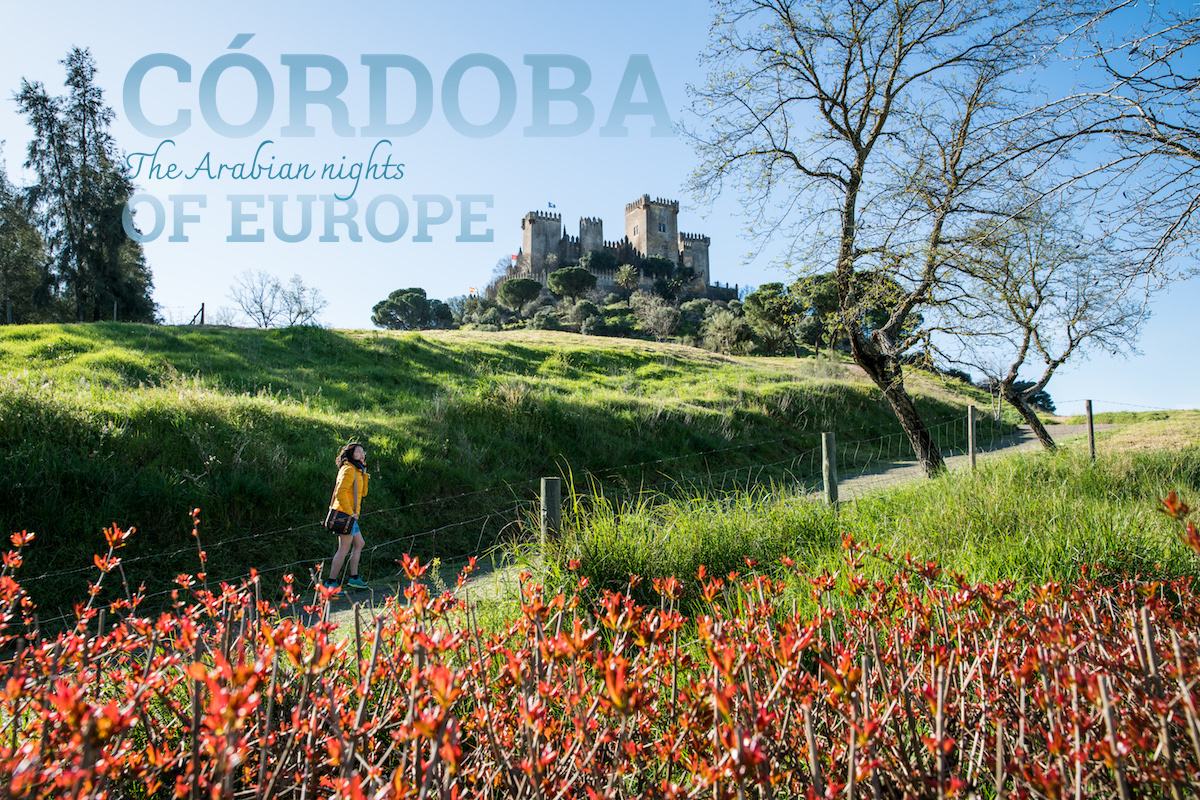
During my early spring road trip, I left from France, crossed the Pyrénées, through the deserts of Spain to get to Andalucía. If you have read the famous book The Alchemist by Paulo Coelho, you would know it as Santiago’s homeland and also the beginning of his adventure across the deserts to find treasure.
Andalucía is quite big, located in the far south of Spain, only the narrow Strait of Gibraltar apart from Morocco. As a bridge between Europe and Africa, Andalucía is a melting pot of diverse cultures, reconciling many civilisations and religions over thousands of years. Therefore, coming to Andalucía means coming to a whole new and different Europe. It is as romantic as traditional Europe, and also as charming and mysterious as the Arabian world of One Thousand and One Nights.
In the early 8th century, the Moor – Muslim Arabs from North Africa arrived in Europe and quickly invaded almost all of the Iberian Peninsula, including what is Spain and Portugal today. At that time, while the rest of Europe was engulfed in darkness in the Middle Ages, for more than 700 years, the Islamic Kings built up the prosperous area of Al-Andalus, establishing a superior civilisation and sumptuous wealth that no other Western European region could compete with.
Coming to Andalucía means coming to the heart of Spain with lively flamenco and raging bullfights. In this land, olive fields stretch across the hillsides, and almond orchards spread their wings, blushing in the wind of March. Orange and lemon groves bloom with fragrant flowers in the April sunshine, and when winter comes, the fruit becomes full, juicy, ripe and sweet.
I still remember that morning, I left the inn early to go to Córdoba, the beautiful city in Andalucía that I was about to set foot in. I caught a glimpse of dawn strolling along the roads stretching through the silvery green olive hills. The first rays of sunlight flashed, illuminating the undulating purple peaks of the Sierra Morena mountains. I slightly lowered the car window, enjoying the cool air that still clung with a touch of mist. A new day begins in a new land.
BACK TO THE ANCIENT CAPITAL OF ISLAM IN EUROPE
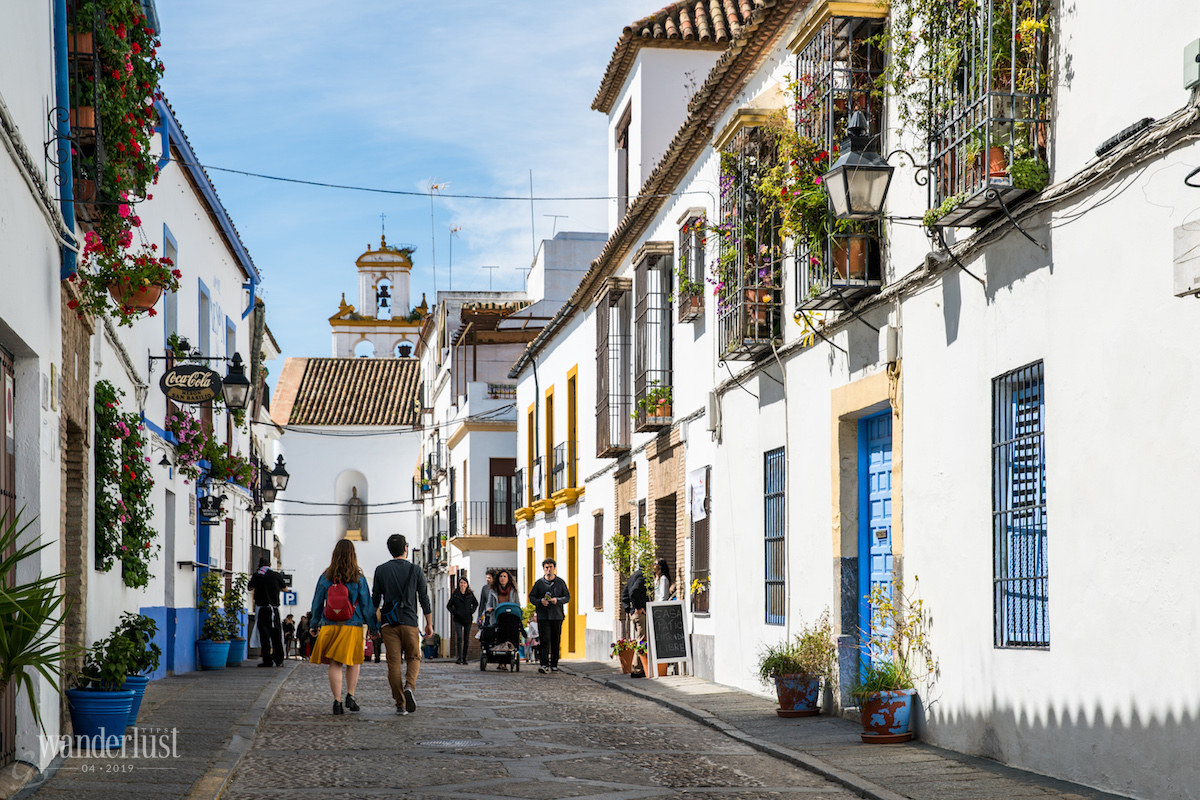
Córdoba, along with Sevilla and Granada, are the most beautiful cities in Andalucía. Córdoba once was the first powerful capital of the Islamic nation of Al-Andalus. In the 10th century, it was the biggest city and also the most highly developed in culture, architecture and art in Western Europe, a true “Western Baghdad”. Córdoba’s population was estimated to be from 250.000 to 500.000 people at that time, with more than 600 mosques.
The 13th century marked a turning point in Córdoba’s history when Catholic Kings began to conquer the lands of southern Spain. Since then, Córdoba has become the meeting point of three religions where Muslims, Jews and Christians all live together. Nowadays, if you have the opportunity to dream away in the labyrinth of the quaint old town of Córdoba, you can still feel the beauty represented in past remnants as thousands of years of history seem to be condensed right in front of your eyes. Córdoba’s architecture is the perfect combination of European, Islamic and Renaissance culture. Massive but also sophisticated works mark a golden age of many centuries ago.
THE MEZQUITA IMPRINTED IN HISTORY
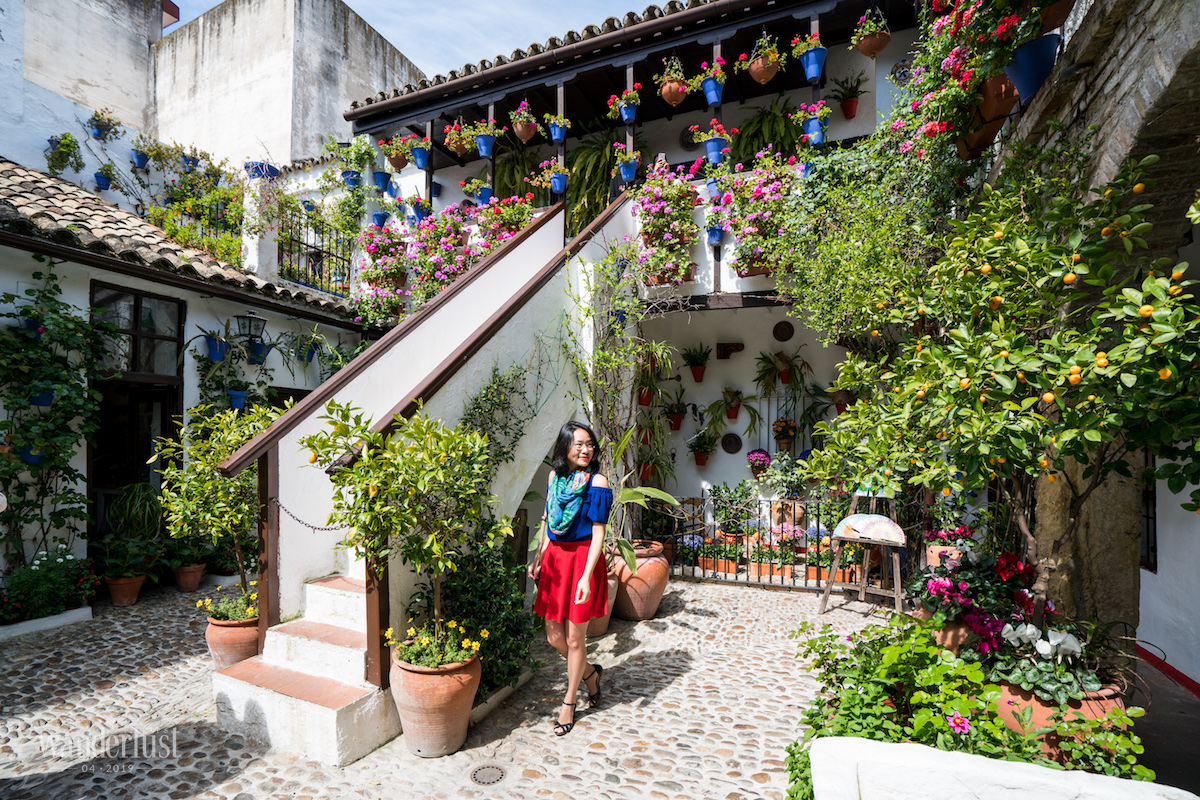
The centre of Córdoba is located on the north bank of the Guadalquivir River, surrounding the Mezquita which is the cathedral of Córdoba and the heart of the city. It is considered as the pinnacle of Moorish architecture in the 10th century with distinctive variations in architecture. The high walls surrounding the Mezquita are elaborately decorated with traditional Arabic patterns and subtle engraved lines. From a Christian church built on a Roman temple, Islamic Kings turned it into a most magnificent work. Taking many centuries to complete, the Mezquita is the second largest mosque in the world, right after the mosque in the Holy Land Mecca, Saudi Arabia. The Mezquita’s astonishing scale is made up of beautiful domes and 856 marble pillars over a vast area of 180mx130m, equivalent to 2,3ha.
In the 13th century, the Catholic Kings invaded Córdoba again, and the Mezquita became a Catholic church. Almost all of the original structure was kept, and only the middle part of the once mosque was converted into a cathedral of Gothic and Baroque architecture, equally majestic as the original construction, to assert the new authority and its beliefs.
Until this day, people still can distinguish the ancient vestiges from ancient Roman times, located next to the window frames and soft arches in the dominant Arabian style. After visiting countless religious buildings in the world, perhaps only the Mezquita, along with its historical vestiges, can make me feel so incredibly overwhelmed.
WANDERING THROUGH THE ANCIENT TOWN OF CÓRDOBA
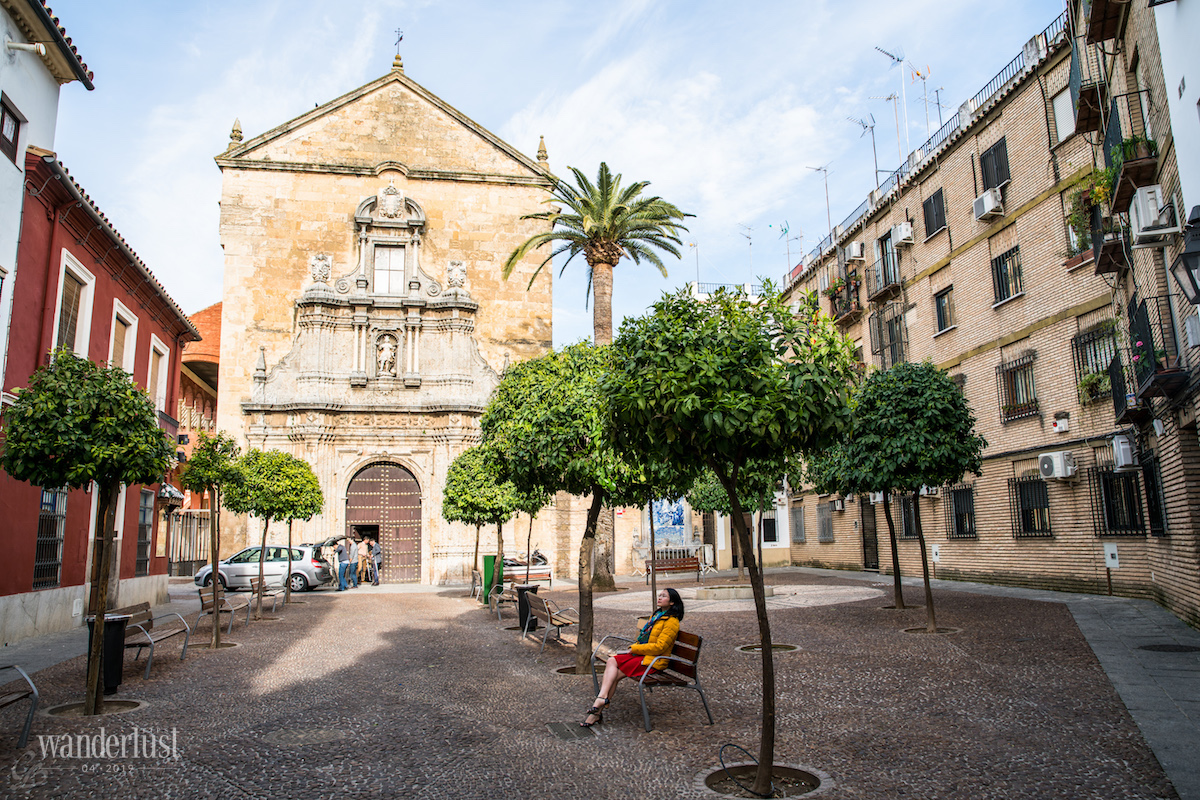
Starting from the Mezquita, small streets radiate out around it. The Arab and Jewish neighbourhoods (Judería) together contribute to Córdoba’s lovely character with vibrant corners with a touch of a Moroccan market, bustling with souvenirs for tourists. Suddenly, after a turn, tranquillity returns in the shadows of freshly painted houses.
Going for a walk in the old town of Córdoba on a fine Spring morning filled with the scent of orange blossoms is an unforgettable memory. Walking from the centre to the San Basilio neighbourhood, glimpsing into the slightly open doors, you will be tremendously intrigued. Córdoba’s lovely narrow streets, as well as in many other cities in Andalucía, hold hidden surprises. Buildings often have patiocourtyards, a legacy of ancient Roman architecture, today these are quite popular in the South of Spain and North African countries. Small courtyards in the middle of the house, separated from the street outside by one or two gates, creating a quiet and peaceful silence in the burning heat of the South.
At the beginning of May, Córdoba is bustling with the flower festival Fiesta de Los Patios. This festival originated in the early 20th century, and is recognised as an intangible cultural heritage by UNESCO. Accordingly, every spring, the courtyards of the houses of Córdoba are splendidly decorated with colourful flower pots and open to visitors. In mid-May, the most beautiful courtyards and the best preserved ancient architecture are voted for. A bit away from the bustling downtown, Córdoba is a peaceful city where I enjoy visiting small squares in the gentle afternoon sun, such as Plaza del Conde de Priego or Calle Compás de San Francisco. Sitting down on a quiet bench under the shade of the orange trees and breathing in the sweet, fragrant orange scent, I feel at ease.
FOLLOWING THE FOOTSTEPS OF GAME OF THRONES
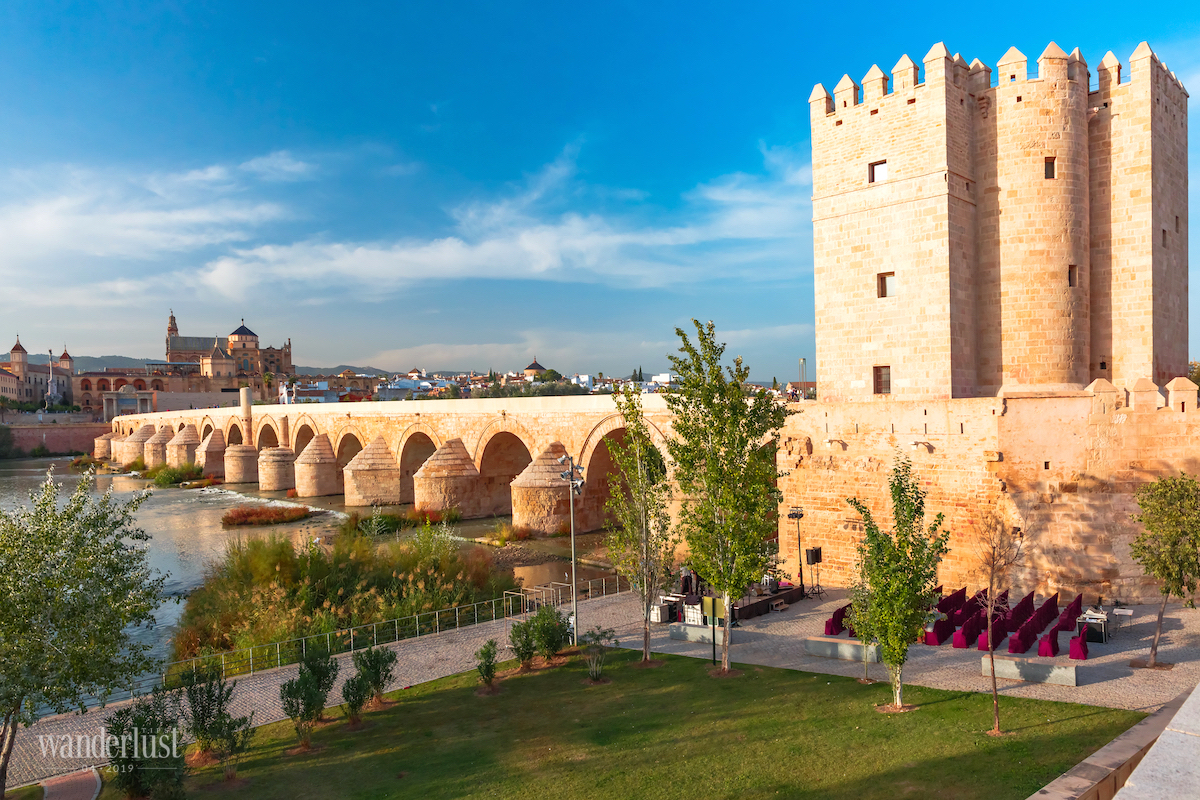
Córdoba is also famous for being in one of the scenes of the HBO series Game of Thrones that is beloved by viewers around the world.
Right next to the city centre, spanning the Guadalquivir River is the Roman Bridge, which is set as the background for the Long Bridge of Volantis in season 5. The construction of the Roman Bridge of Córdoba began in the 1st century BC and it was regularly remodelled until the 8th century when it found its present beautiful and solid appearance. The Roman Bridge is a part of the overall harmony of the beautiful architecture that the Moor’s left for Córdoba. Try entering the city from the southern bank of the Guadalquivir River, the Roman Bridge in the foreground, the ancient church bell towers and the striking Mezquita behind in the sunset. On the bridge, street performers beat their hands on hang drums, playing medieval tonal music, or strumming rhythmic Spanish guitar. At one point, I thought I was entering a fantasy world, like Tyrion Lannister and Varys entering Volantis.
Continuing the journey following Game of Thrones, I went to Almodóvar del Río castle and discovered another treasure of architecture of the Moors in the 8th century. The castle is only about 22km west of Córdoba, which is the real version of Tyrell’s High Garden fortress that appeared in the 7th season of Game of Thrones. Just as in the series, Almodóvar del Río is located on a high hill, between green fields. Try climbing one of the eight ancient towers of the castle, then looking out over the golden rapeseed fields to enjoy the fabulous Andalucían Spring.
W.TIPS
IDEAL TIME TO TRAVEL
Córdoba, like all of Andalucía, has scorching hot summers, so the best time to visit is April to May and October to November when the weather is cool and pleasant. Especially in spring, Córdoba has many festivals and from the beginning of April, the patios of colourful flower vases are open for visitors.
If you do not like crowded places, you should avoid Holy Week – Semana Santa (the week of Easter, varying from March to April depending on the year). This is the week that Spaniards often go out together with many outdoor activities taking place and the price of services also rises, hotel prices can be even three times more expensive.
TRANSPORTATION
>> To Córdoba
Córdoba is a small city, but its train station is located in a convenient spot at the intersection of multiple railway lines, including the LGV expressway from Madrid to the major cities of Andalucía.
Thereby, getting to Córdoba from abroad, you can fly to one of the major cities such as Madrid, Sevilla or Málaga and take the train to Córdoba from there.
>> In Córdoba
Like many other ancient Spanish cities, tourists will have some difficulties in finding a place to park as the ancient paved streets are very narrow. The best way to explore this UNESCO Heritage listed city is by walking. Strolling in the scent of orange blossoms, listening to Spanish music and visiting tapas bars is a charming experience.
ATTRACTIONS IN CÓRDOBA
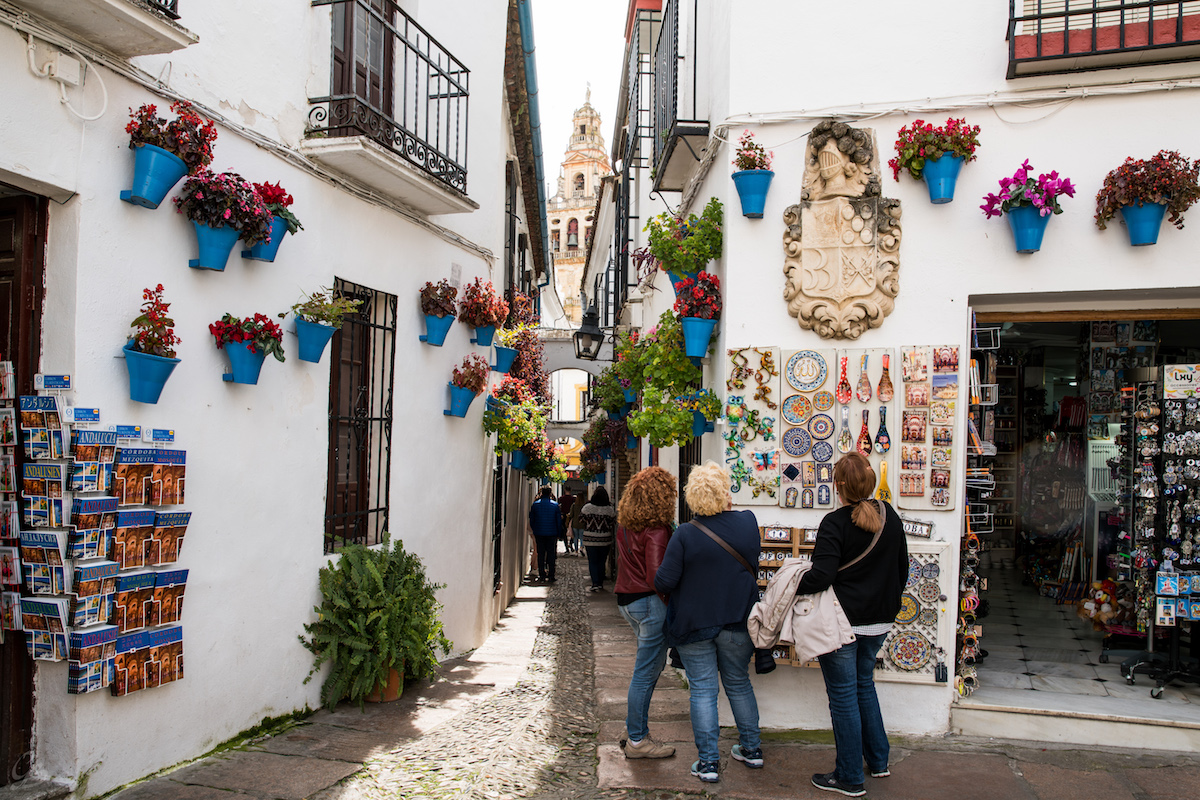
Córdoba is small enough to visit in a day, with the following key attractions:
>> The Mezquita is a Muslim Mosque – Christian Cathedral, the most spectacular and stunning architecture in Córdoba.
>> Next to the Mezquita, near the Guadalquivir River is Alcázar. Alcázar is transcribed from the Arabic word “AlQasr” which means palace. This place is quite small and not as spectacular when compared to the Alcázar in Sevilla or Granada, but this is where Cristóbal Colón (also known as Christopher Columbus or Cristoforo Colombo) had the honour to meet the King and Queen of Spain – Ferdinand II d’Aragon and Isabella I de Castilla in 1486. And from there, Cristóbal Colón gained the support of the Spanish Court to embark on his 1492 journey which is one of the most famous in history.
>> Judería Old Town is where you can take a leisurely walk, exploring the beautiful streets and bustling shops. >> The tiny San Basilio area has many patios for tourists to visit and enjoy the flowers. Some require tickets, but there are also many free or voluntary donation visits.
>> You should visit the Roman Bridge across the Guadalquivir River to look at the poetic scene of Córdoba backed by a bright red sky at sunset.
Avoid going to Córdoba on Sundays and Mondays because the city’s attractions close early on these two days, some do not even open on Mondays at all.
If you stay for another half day in Córdoba, you can go to the Almodóvar del Río castle, 22km from Córdoba. To get there, you can take the M-250 bus from Córdoba di San Sebastian, stop at Almodóvar del Río (Parada de Consorcio). Travel time is about 45 minutes, and the ticket price is 2EUR (~ 52,000VND). When you arrive at the parking lot at the bottom of the Almodóvar del Río castle, don’t follow the paved road to the main gate but take the trail to climb the hillside on the right of the parking lot (if you are facing the castle). This trail leads you to some beautiful scenic spots with not many people around.
CÓRDOBA’S CUISINE
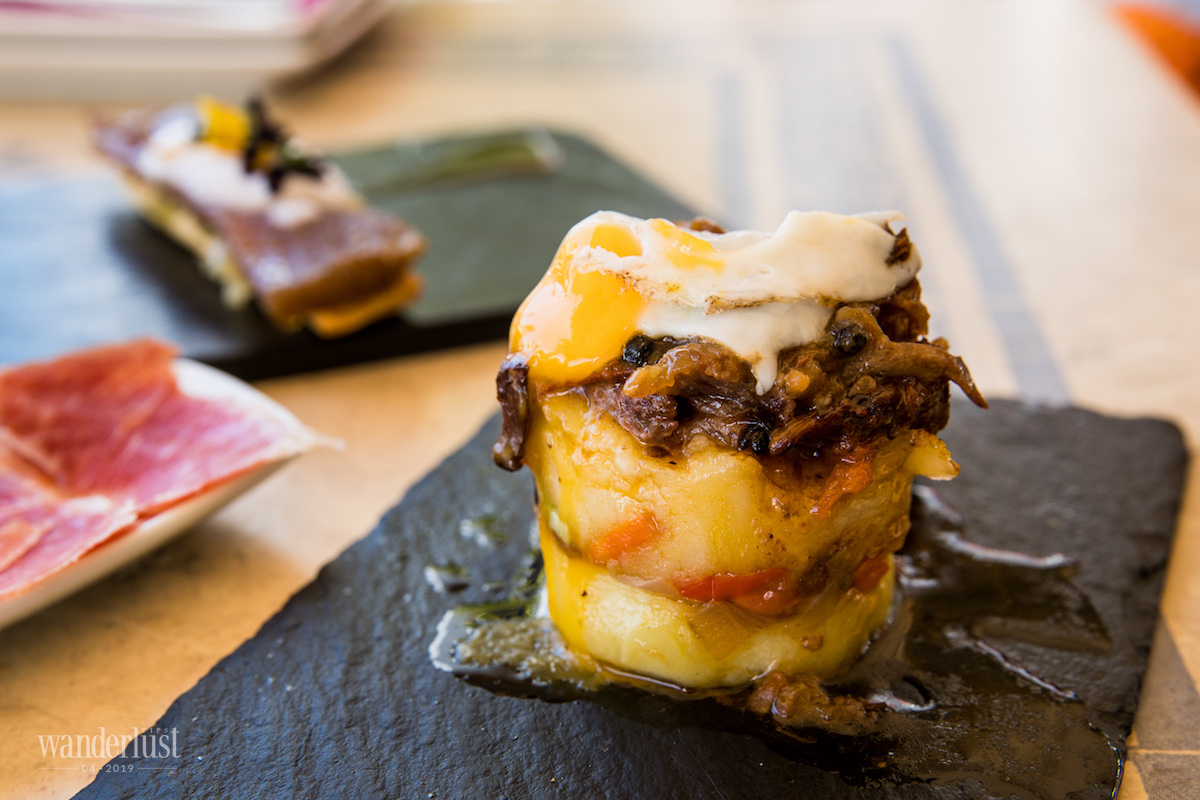
Food in Andalucía and especially in Córdoba is cheap and delicious. Here are some suggestions:
>> Salmorejo: the first speciality that people think of when it comes to Córdoba’s cuisine. This cold soup is ground from tomatoes, bread crumbs, garlic and olive oil, sprinkled with a little bit of ham or boiled egg.
>> Rabo de toro: Bull’s tail is an indispensable speciality on the menus of every traditional Córdoban restaurant during the bullfighting season (from May to September).
>> Tapas: If you haven’t eaten Tapas it means you haven’t been to Spain yet. This is not only a dish but also a lifestyle in this country. In Spanish, they even have the word “tapear” which means go eat tapas. Tapas are appetisers, each part is as small as half a hand, but it is also possible to order as much as you like to eat as a main dish. Andalucía tapas bars often give you free tapas when you order drinks, and there are countless delicious tapas bars in Córdoba.
>> Tortilla de patatas: This potato omelette is also one of Spain’s specialities to try.
>> Jamón Ibérico: This is one of the best salted and smoked hams in Spain. The Jamón Ibérico of Córdoba originated in the famous Los Pedroches valley.
Some appealing restaurants that you should visit in Córdoba:
>> Santos Bar: tapas bar located right next to the Mezquita where they have the best tortilla de patatas in the city.
>> Taberna El Paseo: located in Plaza Cruz del Rastro, on the waterfront, east of the Mezquita. They have many types of tapas, especially the delicious Jamón Ibérico.
>> Taberna La Viuda: a traditional Andalucían and Córdoban restaurant located in the San Basilio area. It is pretty with a green patio and has good food at reasonable prices. You need to reserve a table in advance.
Wanderlust Tips


[…] Europe’s greenest city, the capital of Denmark aims to become the world’s first carbon-neutral capital […]
[…] carefully conceived to usher in a new phase of ultra-luxury hospitality to the city of Madrid and Spain at […]
[…] among the oldest continuously inhabited cities in Europe, Trier is a city worth visiting, especially for visitors who like Roman architect. The city managed […]